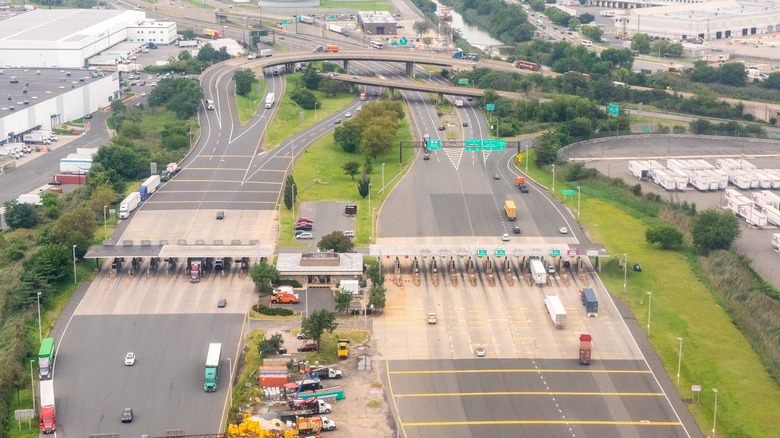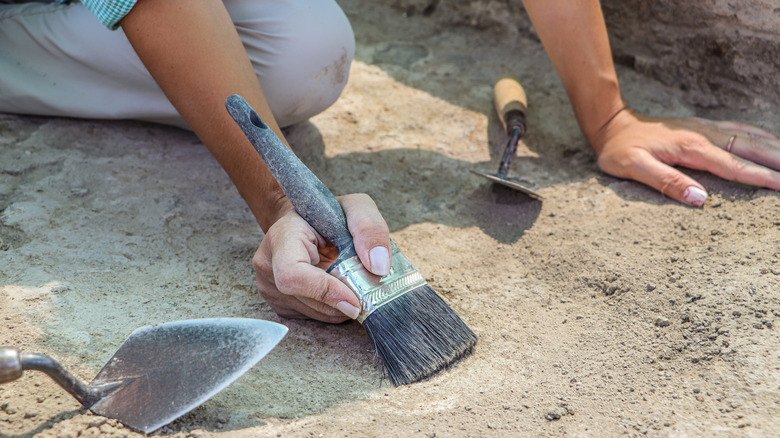Part Of This Major New Jersey Highway Was Quietly Built Over An Abandoned Asylum's Long-Forgotten Cemetery
We often look out of our car windows to marvel at the passing scenery, but few of us give thought to what lies underneath the roads we're driving on. If you've ever driven on the New Jersey Turnpike — one of the busiest road networks in the United States — you may have been blissfully unaware that underneath a portion of the interchange near the town of Secaucus once lay a mass graveyard, unearthed during roadworks in 2002.
The New Jersey Turnpike is a 117-mile stretch of highway whose southernmost point begins at the Delaware Memorial Bridge whose northernmost point ends past the George Washington Bridge in Ridgefield Park. The busy highway network grants motorists access to quaint and intriguing destinations like Delaware's charming and historic colonial town of Odessa; Pennsylvania's must-visit underrated town of Ambler; and New Jersey's wooded and mysterious Pine Barrens, home to abandoned towns and hiking trails.
The site where the graves were discovered was known as Potter's Field. For decades beginning in 1870, this place was used as a burial ground for people from Snake Hill, a complex of institutions including a prison, a debtor's almshouse, isolation hospitals, an asylum, and a sanitarium. Unidentified bodies from nearby Jersey City were tossed into Potter's Field as well. Snake Hill ceased operations after the Great Depression, and the site succumbed to landfill and was forgotten until its chilling rediscovery.
The exhumed remains of the New Jersey Turnpike
The mass graves were accidentally unearthed by New Jersey Turnpike Authority workers while carrying out a highway interchange expansion in 2002. What started as routine work quickly became "one of the largest disinterments of bodies in the U.S. history," according to Archaeology, a publication for the Archaeological Institute of America. Archaeologists unearthed a staggering 4,751 bodies along with 118,000 personal effects over 10 months. Working without any discernible markers or burial records, the team was still able to identify over 900 bodies by 2003. Remains of stillborns were estimated to have been dumped by the hospitals in the late 1950s. "Anyone could die out here. You could have been the most wealthy person in the area, and you got brought out here with some disease or something, and you got buried here," Secaucus town historian Dan McDonough told NJ.com.
They could only venture guesses about the remains' former lives through small clues, such as gunshot wounds piercing a skull, or 500 pieces of shattered bone from a victim of a train accident. Among the bones, investigators also found coins, pipes, pine box caskets, glass eyes, and medals. Funded by the New Jersey Turnpike Authority, the remains and artifacts were properly laid to rest in the town of Hackensack accompanied by a memorial ceremony in 2004. Today, a granite monument erected at the Secaucus interchange indicates the location of Potter's Field, a small but significant reminder of the forgotten remains that lay below its surface, silently and patiently, for decades.

